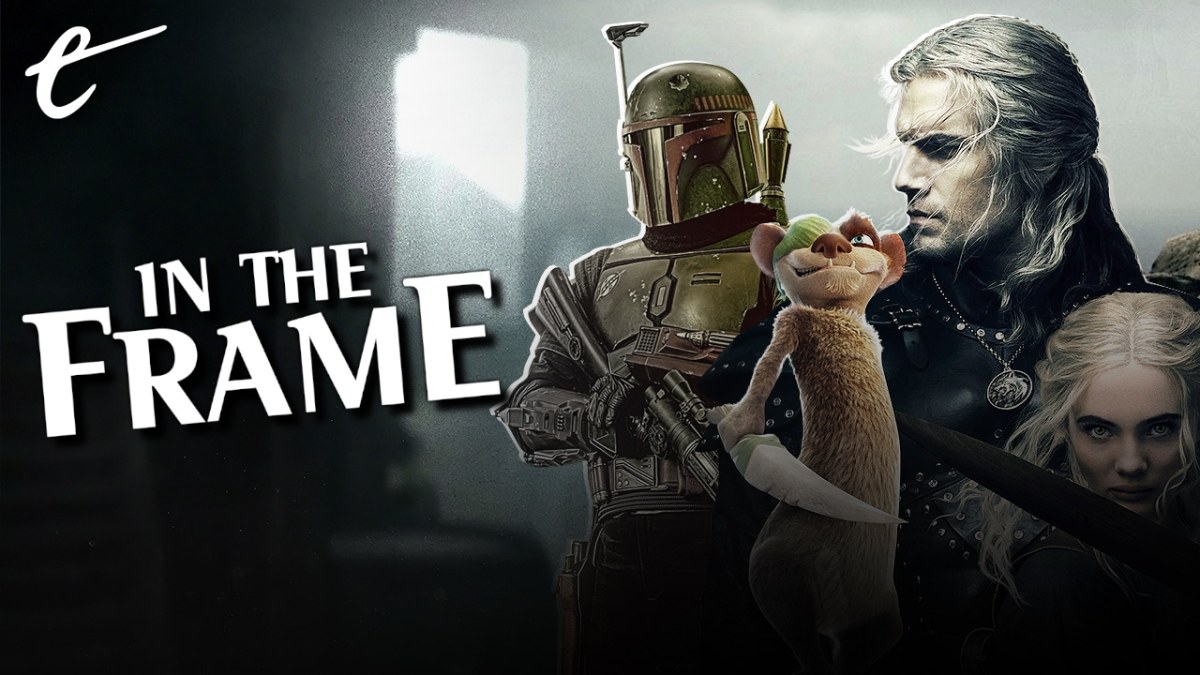This is the era of “content,” and content soup is upon us.
It’s hard to figure out exactly when the era began. Ted Sarandos was appointed “Chief Content Officer” at Netflix in March 2000, seven years before the company properly began its transition from physical to streaming media. The word occurs frequently in coverage of the industry in those years. Sarandos participated in a Content Theater Q&A session for the National Association of Broadcasters in April 2012, and the media world gossiped about the quality of the company’s “content.”
There are conflicting accounts about how the word “content” came to refer to what it does today, which is essentially any mediated experience. John Long speculates that it can trace its roots back to the early days of the internet, when it referred to any component of a website that was not code. Jonathan Salem Baskin similarly credits its ubiquity to the evolution and omnipresence of modern media technology, summarizing the term’s current usage as implying “a box that needs to be filled.”
“Content” is an effective word for a major corporation like Netflix. It encapsulates a wide variety of media and suggests that it is something to be treated primarily as a business asset. It is an effective catch-all term for the material that companies like Netflix package and distribute, whether licensing it from other studios or producing it in-house. It conveys the sense in which this media is proprietary. It is something that, to a service like Netflix, provides value for the service it is selling.
It’s like talking about any other resource, suggesting that what these companies provide is no different from livestock or food reserves. “We have become Netflix’s single largest supplier of original kids’ content,” DreamWorks CEO (and future Quibi visionary) Jeffrey Katzenberg would boast in February 2014, as if DreamWorks were loading trucks full of Turbo and The Croods to drive through the night to Netflix HQ. The term has obvious utility, in large part because it’s so generic.

In recent years, the term has become more widespread. It is no longer used exclusively, or even primarily, in an economic context. “HBO is a disciplined content creator,” Wedbush Securities analyst Michael Pachter would boast in September 2016, suggesting that not all content was created equal. It is used casually, encompassing all manner of multimedia experiences from films to television shows to video games to books to articles. You are reading content right now.
Inevitably, artists came to realize that their work was being labeled indiscriminately as “content,” as nothing more than material to fill those empty boxes for those multimedia entities. “It can all be summed up in the word that’s being used now: content,” Martin Scorsese stated in April 2018. “You’ve got a picture, you’ve got a TV episode, a new trailer, you’ve got a how-to video on a coffee-maker, you’ve got a Super Bowl commercial, you’ve got Lawrence of Arabia, it’s all the same.”
There is nothing inherently wrong with the term “content” as an economic descriptor. It serves an understandable catch-all purpose for describing the material held by entities like Netflix, YouTube, or Disney. However, as the term has crept into more widespread use, it has perhaps come to impact the way in which media is both created and consumed. This is somewhat worrying, as it threatens to rob that media of its original character, turning it into an indistinct gray soup.
“Content” is often framed as a numbers game. It is about producing high quantities of material to be rapidly consumed by an eager audience. This explains innovations like the ability to playback material at higher speeds. This effectively denies the work’s creator any control of the pacing of the media in question, and it prioritizes the audience’s desire (or even need) to consume “more” and “faster.” It doesn’t matter what is being consumed. All that matters is the act of consumption itself.

This explains how streaming services schedule their series. The weekly release model employed by streamers like Disney+ or Amazon is aimed primarily at audience retention, a big concern in the streaming age. Providers like Disney+ and Paramount+ schedule their releases to “spread” big brands like the Marvel Cinematic Universe or Star Trek across as much of the calendar year as possible. The goal is that there will always be something new associated with the brand, ready to drop.
There is, to be clear, nothing inherently wrong with this. Television shows have been airing weekly for decades. It is a model that works. More than that, there is something to be said for the ability of a weekly television show to capture and hold the audience’s attention more effectively than a show that drops in one big lump. However, there is something markedly different about how many streaming services approach weekly releases as compared to classic television.
This gets back to the “content soup” issue. Historically, the television episode has been an artform unto itself. It takes a lot of skill to write a good episode of television. This is especially true when writing for a heavily serialized show. The Sopranos and Mad Men were part of a wave of television often described as “novelistic,” but both worked because individual episodes were carefully constructed building blocks layered on top of one another to create something intricate.
“Each episode helps add something to the larger story,” critic Alan Sepinwall noted of Breaking Bad, another heavily serialized show with a strong sense of structure, “but there’s a specific structure, conflict, and often theme to each that makes it satisfying whether watched a week apart from the others (as it originally aired) or as part of a binge now.” In an era that pushes television more towards “content,” these sorts of structural distinctions are largely lost.

WandaVision, the first of the Disney+ Marvel streaming shows, did a decent job of structuring itself, with each episode marking a transition point through the history of television as a medium. Loki was a bit rougher, but it also managed a reasonably clear structure across its six episodes. However, less than a year removed from broadcast, it is harder to remember shows like The Falcon and the Winter Soldier or Hawkeye as anything more than a jumble of plot points, memes, and action sequences.
The Book of Boba Fett is perhaps the most egregious example of this. It is a show that is entirely shapeless. It is released in seven weekly installments, but that number seems derived from some external calculation rather than the needs of the story being told. Watching the series, the viewer gets the sense that the same amount of “content” could easily have been condensed to five or stretched to nine episodes, had the invisible external mathematics worked out slightly differently.
The first four episodes of The Book of Boba Fett feature extended flashbacks that explore what happened to Boba Fett (Temuera Morrison) between his apparent death in Return of the Jedi and his return during the second season of The Mandalorian. There is nothing inherently wrong with this structure. It is similar to the basic template employed by shows like Lost or Yellowjackets.
Unfortunately, Lost and Yellowjackets understand basic storytelling structure in a way that The Book of Boba Fett does not. In Lost and Yellowjackets, there is a plot or thematic connection between the events in the present day and the flashbacks. The audience is invited to consider the relationship between the past and present through these explicit or implicit signifiers. The past and present events inform one another and combine to offer greater understanding of the bigger picture.

In contrast, the flashbacks in The Book of Boba Fett are positioned arbitrarily. There’s no real sense that Fett’s memory of the death of the Tuskens informs his negotiation with the Hutt Twins in “The Streets of Mos Espa,” or that the recovery of his old ship relates to his appeal to local crime bosses in “The Gathering Storm.” The flashbacks are purely exposition, to the point that it might have made sense to just offer one full episode of flashbacks instead of spreading them across the first four.
This is most egregious with “Return of the Mandalorian,” an episode in which Boba Fett doesn’t appear and that features no reference to the show’s premise until the final moments. “Return of the Mandalorian” feels more like the third season premiere of The Mandalorian than the fifth episode of The Book of Boba Fett. The episode’s plot effectively amounts to a lead from an entirely different Star Wars spin-off buying a new spaceship. It is hardly a compelling story for Boba Fett.
Then again, this is what happens when something like The Book of Boba Fett is treated as “content” rather than as a piece of art. Watching The Book of Boba Fett, it never seems like the creative team is working with the goal of crafting a strong and compelling episode of television. It instead feels like the goal is to produce 35-to-50 minutes of something recognizable as Star Wars on a weekly basis. It doesn’t even matter what title is on the show, so long as that production target is met.
The result is something akin to a watery soup. It’s a thin liquid that holds no distinct shape or flavor, but it can be measured out as needed and can adjust to the contours of any container into which it is placed. It’s not really filling, but it’s only intended to hold the audience over until the next week and to hope that, in that at least, they remain content.






Published: Feb 4, 2022 11:00 am